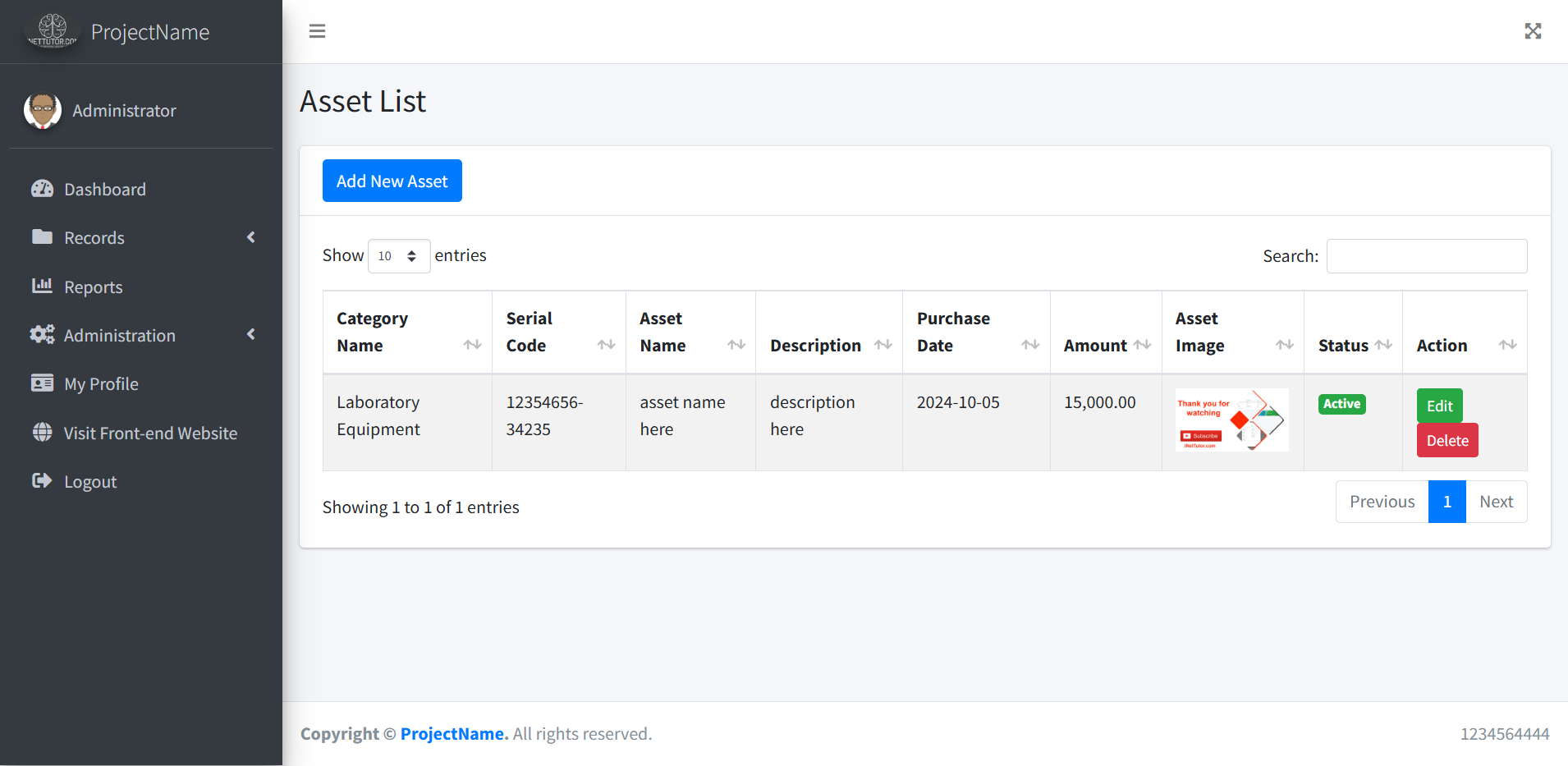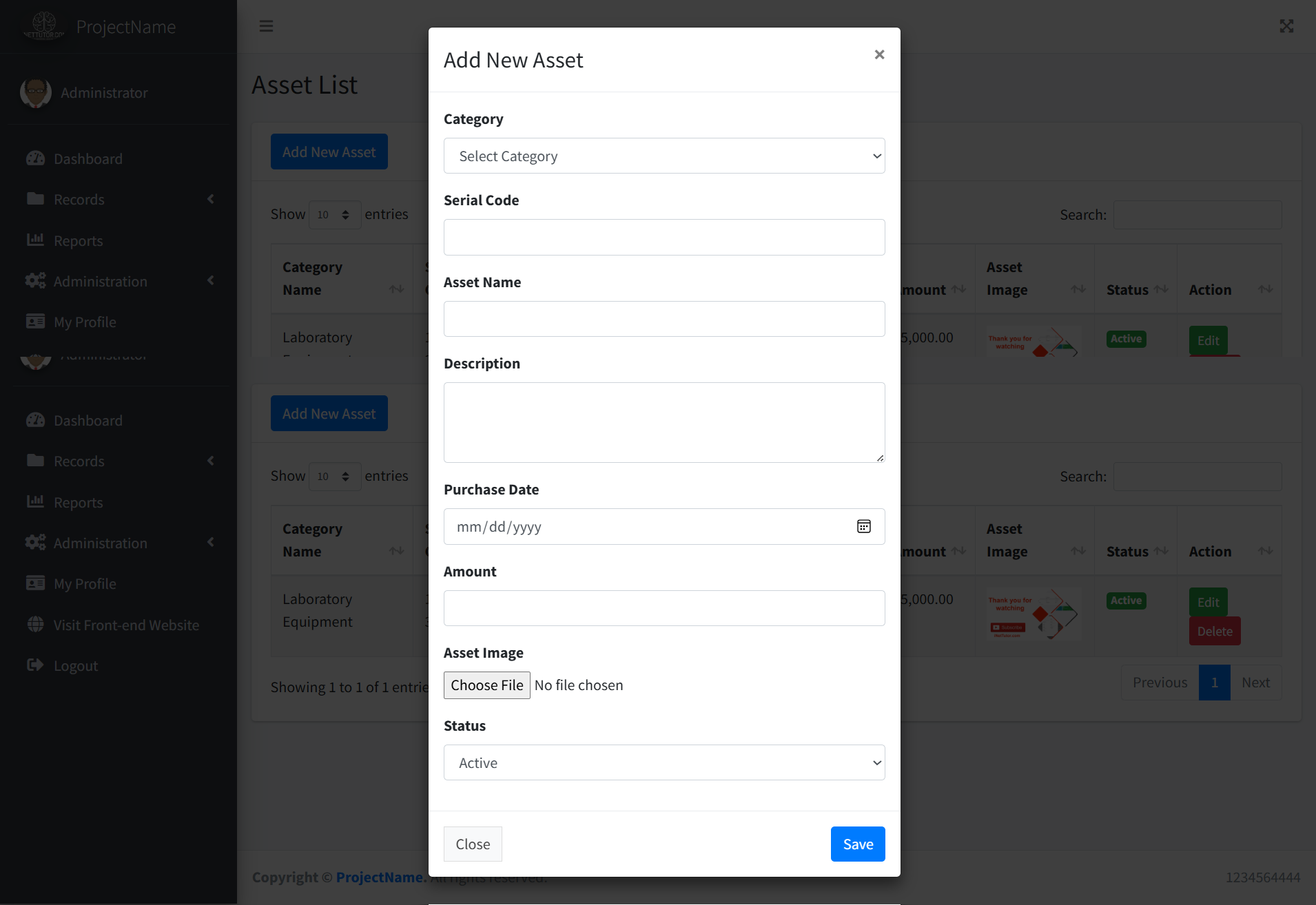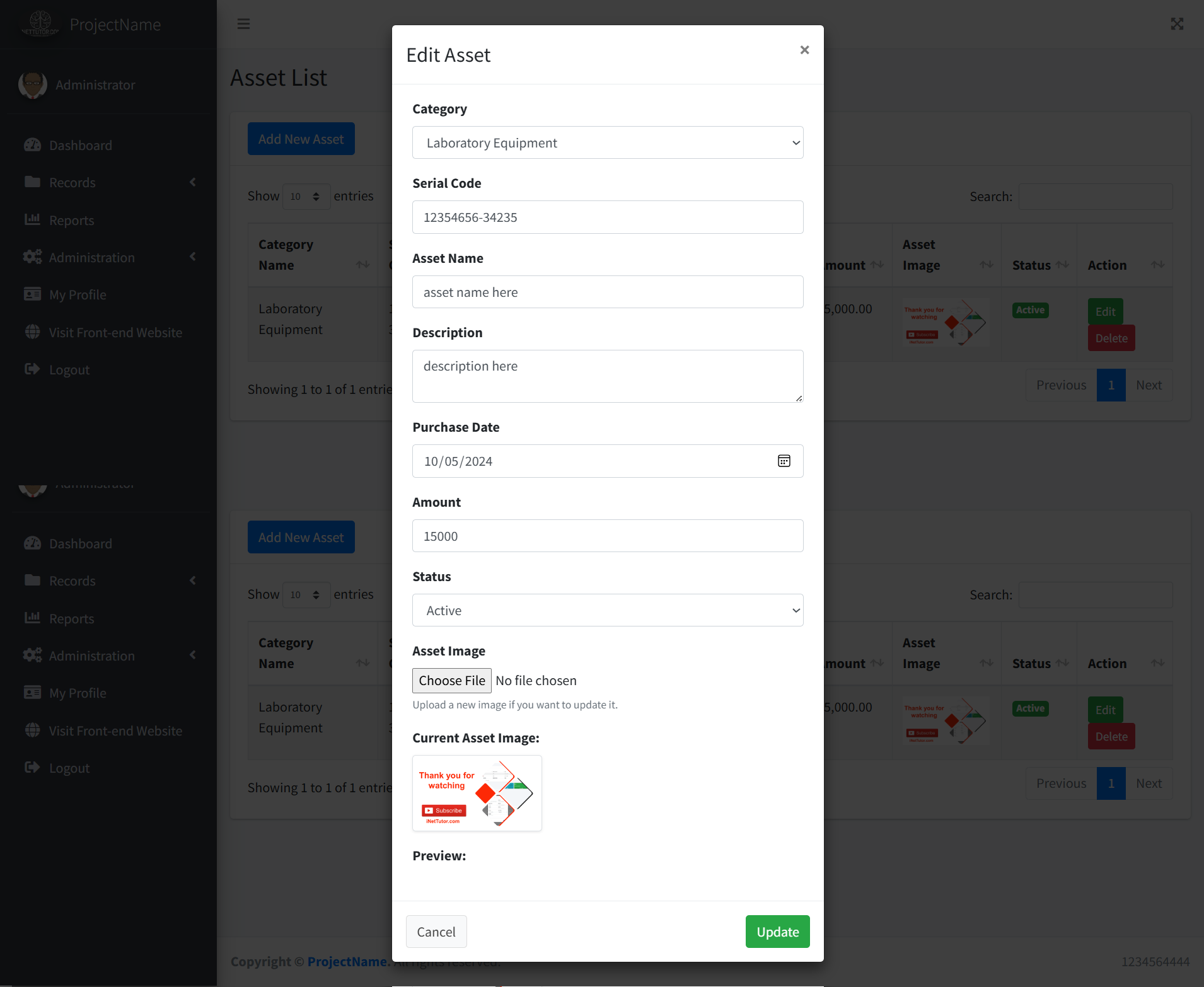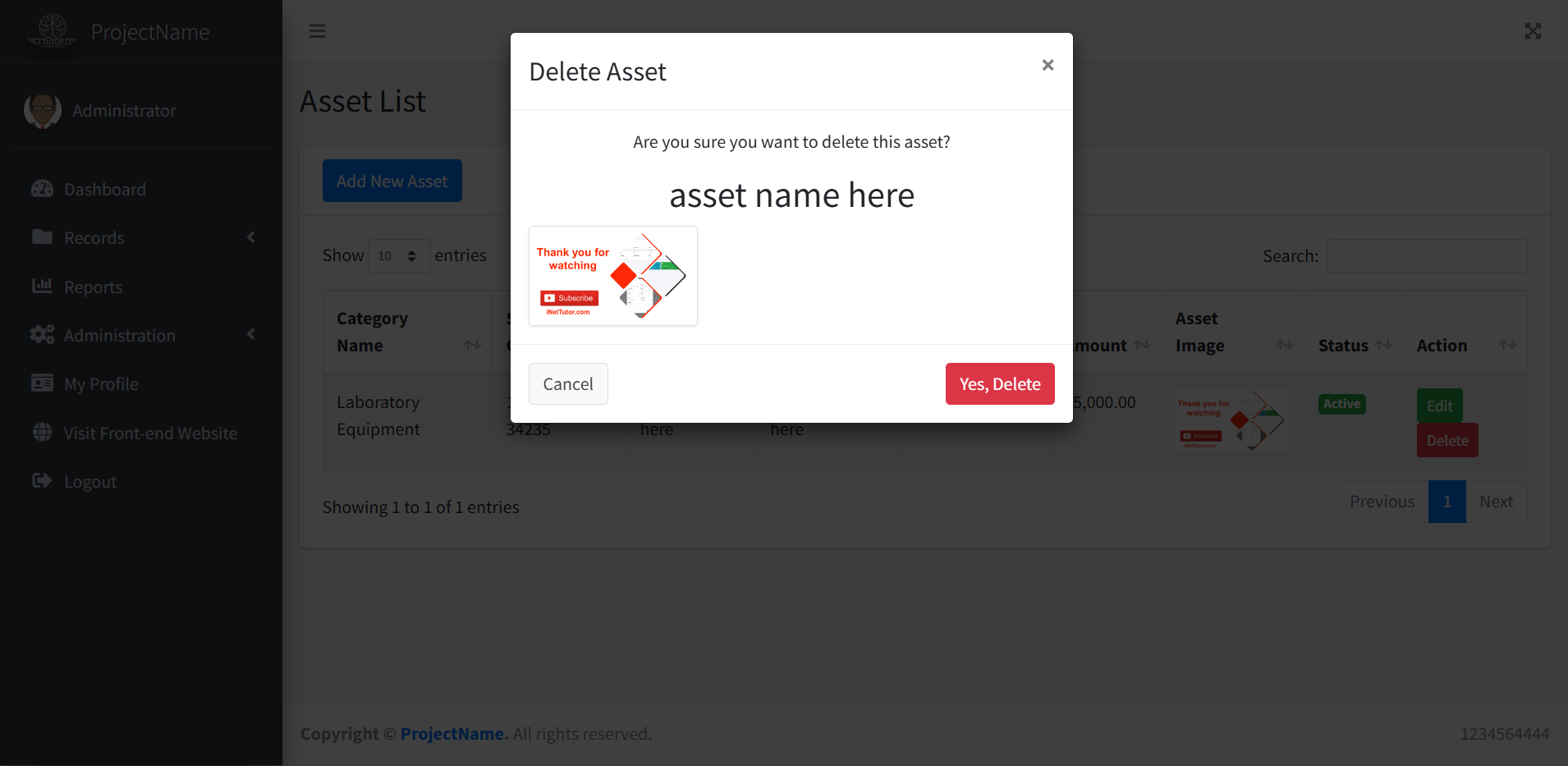School Asset Inventory Asset Module
Introduction
Table of Contents
The School Asset Inventory Module is designed to streamline the management of school assets, including equipment, supplies, and other resources. This module provides a user-friendly interface for tracking and maintaining information related to each asset, ensuring that schools can effectively monitor their inventory. With features for adding, editing, and deleting asset records, the module simplifies the overall process of asset management.
Importance of Managing School Assets
Effective management of school assets is crucial for several reasons. First, it enhances inventory tracking, allowing schools to maintain accurate records of their resources. This ensures that assets are utilized efficiently, preventing over-purchasing and minimizing waste. Second, proper resource allocation helps schools prioritize their spending and make informed decisions about future investments. By keeping an organized inventory, schools can improve accountability, reduce loss or theft, and ultimately enhance the educational environment for students and staff.
Objectives of the Module
The primary objectives of the School Asset Inventory Module include:
- Streamlined Asset Management: Users can easily add, update, and remove asset records, ensuring that the inventory is always current and accurate.
- Improved Resource Allocation: By maintaining detailed records of all assets, schools can make informed decisions regarding resource allocation and budgeting.
- Enhanced Reporting: The module provides essential data insights that help administrators assess asset usage and plan for future needs.
- User-Friendly Interface: Designed with simplicity in mind, the module allows users of all technical levels to navigate and utilize its features effectively.
By implementing the School Asset Inventory Module, educational institutions can achieve greater control over their assets, leading to improved operational efficiency and better support for the educational mission.
Understanding the tbl_asset Table in the School Asset Inventory System
Purpose of the tbl_asset Table
The tbl_asset table is a crucial component of the School Asset Inventory System, serving as the central repository for all asset-related information. Its primary role is to manage and organize data about each asset, allowing for efficient tracking and reporting.
Key columns within the tbl_asset table include:
- asset_id: A unique identifier for each asset, serving as the primary key.
- category_id: A foreign key linking the asset to a specific category in the tbl_category table, facilitating the categorization of assets.
- serial_code: A unique serial number assigned to the asset, essential for tracking and identification.
- asset_name: The name of the asset, providing a clear and descriptive label for easy recognition.
- description: Additional details about the asset, enhancing understanding and context.
- purchase_date: The date the asset was acquired, crucial for tracking the age and depreciation of assets.
- amount: The monetary value of the asset, allowing for financial assessments and budgeting.
- asset_image: A link to an image of the asset, providing a visual reference.
- status: Indicates the current state of the asset (e.g., active, returned, disposed, maintenance), assisting in inventory management and operational decisions.
The tbl_asset table interacts with other tables, such as tbl_category and tbl_transfer. For example, the category_id column connects to the tbl_category table, which contains categories for grouping assets, while the tbl_transfer table tracks asset movements between accountable persons.
Data Types and Constraints
Understanding the data types and constraints used in the tbl_asset table is essential for maintaining data integrity and optimizing performance.
- Data Types: Each column in the table has a specific data type that defines the kind of data it can store. Here are the typical data types used:
- asset_id: INT (integer) — used for the primary key to uniquely identify each asset.
- category_id: INT (integer) — used as a foreign key to reference the asset’s category.
- serial_code: VARCHAR (string) — used for storing unique serial numbers.
- asset_name: VARCHAR (string) — used for storing the name of the asset.
- description: TEXT — used for additional details about the asset.
- purchase_date: DATE — used for storing the date the asset was acquired.
- amount: DECIMAL (numeric) — used for storing the asset’s monetary value.
- asset_image: VARCHAR (string) — used for storing the path to the asset image.
- status: ENUM (enumeration) — used for defining the asset’s status with predefined values (e.g., active, returned, disposed, maintenance).
- Importance of Constraints: Constraints ensure that the data entered into the tbl_asset table adheres to specific rules, enhancing data quality. Key constraints include:
- Primary Key: The asset_id column is designated as the primary key, ensuring that each record is unique and can be uniquely identified.
- Foreign Keys: The category_id column acts as a foreign key, enforcing referential integrity by linking assets to their respective categories in the tbl_category table.
- NOT NULL: Critical columns such as asset_name, purchase_date, and amount are defined as NOT NULL, ensuring that essential information is always provided.
- UNIQUE: The serial_code column may be designated as UNIQUE, preventing duplicate entries and ensuring that each asset can be accurately tracked.
By implementing appropriate data types and constraints, the tbl_asset table maintains the integrity of the data, supports efficient querying, and enhances overall system performance.
Explanation of Files in the Asset Module
The Asset Module consists of several files that work together to manage the asset inventory effectively. Below is a breakdown of each file’s purpose and functionality.
- asset_list.php
This file serves as the main interface for viewing and managing the list of assets in the inventory. It displays all the assets stored in the tbl_asset table, allowing users to view essential details such as asset name, category, purchase date, and status. The file includes options for adding new assets, editing existing ones, and deleting assets through modals.
- add_modal.php
The add_modal.php file contains the HTML and PHP code for a modal dialog that allows users to input new asset details. This modal provides fields for essential information such as asset name, category, serial code, description, purchase date, amount, and an option to upload an asset image. Once the form is submitted, the data is processed and added to the tbl_asset table through the addAsset.php function.
- edit_delete_modal.php
This file is responsible for handling both editing and deleting assets. It contains the modal that appears when a user selects an asset to modify or remove. For editing, it pre-fills the form with existing asset data, allowing users to update the necessary fields. For deletion, it prompts the user to confirm the removal of the selected asset from the inventory. This file ensures that all asset management actions are performed smoothly.
- asset_image folder
The asset_image folder is dedicated to storing images of the assets. When users upload an asset image through the interface, it is saved in this folder. This organization helps keep the project structured and allows for easy retrieval and display of asset images within the asset list.
- function folder
The function folder contains several PHP files that handle specific backend functionalities related to asset management:
- addAsset.php: This file processes the form submission from add_modal.php. It sanitizes the input data and inserts the new asset details into the tbl_asset table. It also manages file uploads for asset images and logs any activity related to adding assets.
- deleteAsset.php: This script is responsible for deleting an asset from the database. It retrieves the asset’s ID, validates it, and then removes the corresponding record from the tbl_asset table. It also manages any necessary cleanup, such as deleting associated asset images.
- editAsset.php: This file handles updates to existing asset records. It processes form submissions from edit_delete_modal.php, updating asset details in the tbl_asset table. It ensures that changes are logged and that any asset images are correctly handled during the edit process.
Note
All these files should be organized within the asset folder, which is located inside the pages folder of the project. This structure ensures proper organization and easy access to the asset management functionalities, promoting a clean and efficient codebase.
Screenshots
This section showcases key user interface elements and navigation flow within the School Asset Inventory Asset Module. The visuals provided will help users understand the layout, functionality, and processes involved in managing school assets efficiently.




Highlighting Key Actions
- Adding Assets: Users can click the “Add Asset” button on the asset list view, which opens the add asset modal. After filling in the required fields, users can submit the form to add the new asset to the inventory.
- Editing Assets: To edit an existing asset, users select an asset from the list and click the “Edit” button. This action opens the edit asset modal with pre-filled information, allowing users to make necessary changes.
- Deleting Assets: Users can delete an asset by selecting it and clicking the “Delete” button. A confirmation dialog will appear, prompting users to confirm their action before the asset is removed from the inventory.
Source code and Demo
Summary
In this tutorial, we explored the School Asset Inventory Location Module, highlighting its essential components and functionalities.
Recap of Main Points:
- We discussed the tbl_asset table’s structure and purpose, emphasizing key columns like asset_id, category_id, serial_code, asset_name, and status. Understanding this table is crucial for efficient asset management within the system.
- We reviewed the various files within the asset module, including asset_list.php, add_modal.php, and the functions folder containing scripts for adding, editing, and deleting assets.
- Screenshots provided a visual representation of user interface elements and navigation flow, illustrating how users can interact with the module.
Importance of the School Asset Inventory Location Module: The School Asset Inventory Location Module is vital for schools to track their assets effectively. By implementing this module, educational institutions can ensure better resource allocation, streamline inventory management, and enhance accountability. Proper management of assets leads to improved operational efficiency, which ultimately contributes to a better learning environment for students.
Encouragement for Further Exploration: We encourage users to explore additional features and potential enhancements to the module. Customizing the asset management system to fit the unique needs of your school can significantly enhance its effectiveness.
Finally, we invite you to check out the series of tutorials related to this project for a deeper understanding and additional insights into optimizing your School Asset Inventory System. Happy learning!
Previous Tutorial:
You may visit our Facebook page for more information, inquiries, and comments. Please subscribe also to our YouTube Channel to receive free capstone projects resources and computer programming tutorials.
Hire our team to do the project

